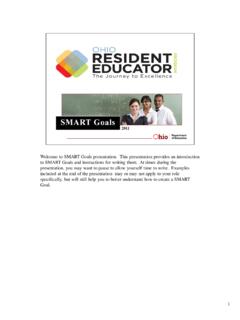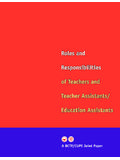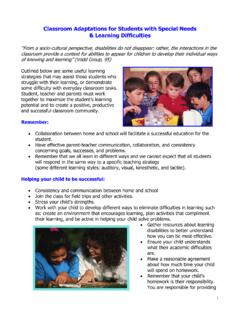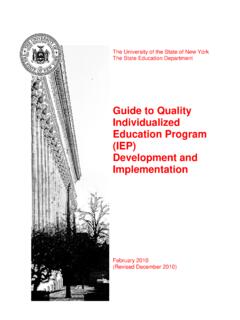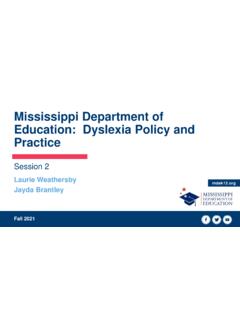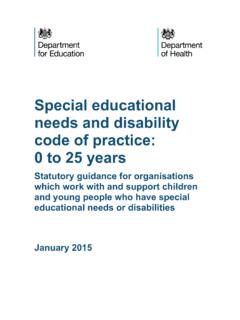Transcription of Staff Guide to Accommodations and Modifications
1 Staff Guide to Accommodations and Modifications 2006 1 Teaching All students Staff Guide to Accommodations and Modifications Accommodations and Modifications , definition 1 Hierarchy of Accommodations and Modifications .. 2 Strategy Levels for Adapting classroom 6 Fine Motor/Penmanship Accommodations and Modifications ..17 Reading Modifications / Accommodations ..19 Writing Spelling Mathematics 25 Content Area Modifications / Accommodations ..27 Behavior Issues and Elementary Scheduling Grading with Accommodations and Recipe for Success (General and Special Education Collaboration)..35 What Are Disabilities?..36 References ..40 2 Accommodations and Modifications Accommodations and Modifications are types of adaptations that are made to the environment, curriculum, instruction, or assessment practices in order for students with disabilities to be successful learners and to actively participate with other students in the general education classroom and in school-wide activities.
2 Accommodations are changes in how a student accesses information and demonstrates learning. Accommodations do not substantially change the instructional level, content, or performance criteria. The changes are made in order to provide a student with equal access to learning and an equal opportunity to show what he or she knows and can do. Accommodations can include changes in the following: presentation of a lesson instructional strategies student response format and procedures time/scheduling environment equipment assignment structure-paper/pencil work Modifications are changes in what a student is expected to learn. The changes are made to provide a student with opportunities to participate meaningfully and productively along with other students in classroom and school learning experiences.
3 Modifications include changes in the following: instructional level content/curriculum performance criteria assignment structure-paper/pencil work Reprinted with permission from the PEAK Parent Center 3 Hierarchy of Accommodations and Modifications Layers based on their effect on the general curriculum Layer 0 No Changes All students do the same assignments. No changes in grading criteria. It is the same for everyone. Layer 1 Minimal classroom Changes All students do basically the same assignments, except some receive additional support or reinforcement. (minimal Accommodations ) No changes in grading criteria. It is the same for everyone. Layer 2 classroom Changes All students learn the same basic content, except with changes in how it is learned or tested.
4 (complex Accommodations ) Grading criteria may vary slightly. Layer 3 Some Changes to Curriculum Some students do reduced or similar assignments, but at a less frustrating level. ( Accommodations and Modifications ) Grading criteria may be based on individual goals and class participation. Layer 4 Significant Changes to Curriculum students do a smaller part of the general curriculum. (significant Accommodations and Modifications ) Grading criteria is based on individual goals and class participation. Layer 5 Significant Changes to Curriculum students do alternate activities relating to the general curriculum. (significant Accommodations and Modifications ) Grading criteria is based on individual goals and class participation. *Less than 10% of the special education students participating in general education classes need Layer 4 or 5 supports.
5 The majority of our special education students can be successful and master much of the general education curriculum with Layer 2 or 3 Accommodations . 4 Layers 1 and 2: Minimal Accommodations Environment Adapt the classroom environment so it makes learning possible for ALL students . Things you can try: Provide an orderly and predictable room Post VISUAL reminders of the rules and procedures Reduce clutter Be consistent Label key areas clearly (Turn in papers here.) Seat target students away from major distractions like doorways, pencil sharpeners, other irritating students , etc. Use behavior cue cards and put them on target student s desk Allow for age appropriate and discrete sensory stimulation stress balls, fidget toys, etc.
6 These help minimize larger distractions like tipping back in seats, constantly getting out of seat, etc. Allow the use of earplugs or headphones (without input/hookups) to block out background noise during study time, test-taking, and classroom assignment time Always keep the Closed Captioning option ON when showing videos or TV segments so that all students can listen to and read the information. Content Instruction Accommodations in instruction and changes in instructional strategies can enhance learning for the entire class. Things you can try: Give at-risk students a very basic introduction to the subject immediately before starting the lesson for the whole class. Ask questions and direct discussions to elicit prior knowledge from the at-risk students .
7 Include hands-on experiences and manipulatives whenever possible. Use experiments and other being there experiences to make the lesson memorable. Schedule field trips at the BEGINNING of the unit to give disadvantaged learners critical background experiences and information to benefit from the ensuing instruction. 5 Continue to repeat and rephrase the major point(s) of the unit or lesson. Insert meanings of vocabulary continuously throughout the lesson. For example, in a geography lesson the teacher asks the question What do the contour (or curved) lines on the map represent? In a science lesson the teacher explains that mold often grows in places that are dark and moist (or wet). During class participation, ask the target student a question about the main idea and state they have a minute to think about it or discuss it quietly with their (pre-selected) neighbor.
8 Return to the student in a minute and re-ask the question. Allow for additional response time. Provide entertaining stories or fun mnemonics which support a point or help students remember vocabulary words or concepts. Partner students for activities. Allow for some groups of three so significantly challenged students can be easily included with two capable peers. Demonstrate how to use graphic organizers and then provide them so students learn how to categorize and organize information. Provide study guides for tests well in advance of the test. Offer copies of lecture notes to students who cannot copy accurately or quickly, have poor penmanship, or note-taking skills. Throughout the year help students fix their own notes using yours as a Guide .
9 6 Layers 3, 4 and 5 -Increased Accommodations and Modifications Assignment Structure-Paper/Pencil Work - Making workbooks, worksheets or other written assignments accessible to all students can be a challenge. It takes knowing both the students AND the material to be taught in order to make reasonable adjustments to written assignments. Simple ways to make Accommodations and Modifications to paper/pencil tasks can be accomplished by: highlighting with colored highlighters highlighting with removable highlighter tape marking text with Post-it notes marking pages with Post-it flags color coding pages, notes, and handouts using white out on parts of paper or to eliminate some multiple-choice answers Content Instruction Reduce the variety of tasks (The class is practicing mixed addition and subtraction facts with flashcards; two students have addition-only cards.)
10 Eliminate less critical information and facts from a copy of your notes (or those of a capable peer) using white out tape. Give it to struggling students to use as a study Guide . Physically move closer to a struggling student before asking him/her a question. Teach this system to the student so he/she can mentally and emotionally prepare for answering questions. This reduces the stress, anxiety, and fear of being selected without warning. Find ways to involve students with significant disabilities in class jobs - passing out papers, collecting materials, taking roll, retrieving items from the office, etc. When asking questions that have several correct answers, select a disabled student first. He/she might only know one of the answers, whereas other students will know most or all of them.
